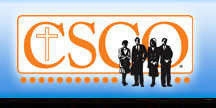 |
| Organizing |
 |
BEYOND THE GOOD SAMARITAN
Paper Presented to:
Rutgers School of Social Work, Rutgers University
Dr. Jose Carrasco
San Jose State University
... "In spite of race, class, and geography, a majority of individuals interpret the tale of the
Good Samaritan as an illustration of charity in terms of contributing money to good causes.
Some members of Evangelical congregations shared that their pastors used the parable to
encourage increased tithing. When asked how their congregation or group carries out the intent
of the message, most individuals refereed to their “ministry to the poor,” usually including
programs such as soup kitchens, clothing programs, day care, and perhaps advocacy programs for immigrants.
Where once the meanings of charity, advocacy, and empowerment were integrally
related, today they seem to signify three different forms of activity. For example, the term
charity usually suggests some form of financial contribution or fundraising on behalf of the poor
or some other targeted group; such giving normally does not require the permission of those
being served. Meanwhile, the advocacy perspective promotes the idea of speaking on behalf of
people who are perceived as incapable of speaking for themselves, such as children, the elderly, and the poor. Consequently, while charity and advocacy might in some way serve to empower, they empower only in an individual and short-term capacity.
On the other hand, when empowerment is viewed in terms of community, it connotes the
commissioning or sending forth of people. Their mutual understanding, preparation, and
agreement to work in concert entrusts people with the authority to take charge and act on their
own behalf. Without their active participation, people cannot be empowered in a manner that
It enhances their self-respect and social bonding. In sum, it is the concept of community
empowerment that underlies the practice of community organizing.
(For the complete article go to PICO website.)
|
|

 CSCO, P.O. Box 60123, Dayton, OH 45406; email:
CSCO, P.O. Box 60123, Dayton, OH 45406; email: